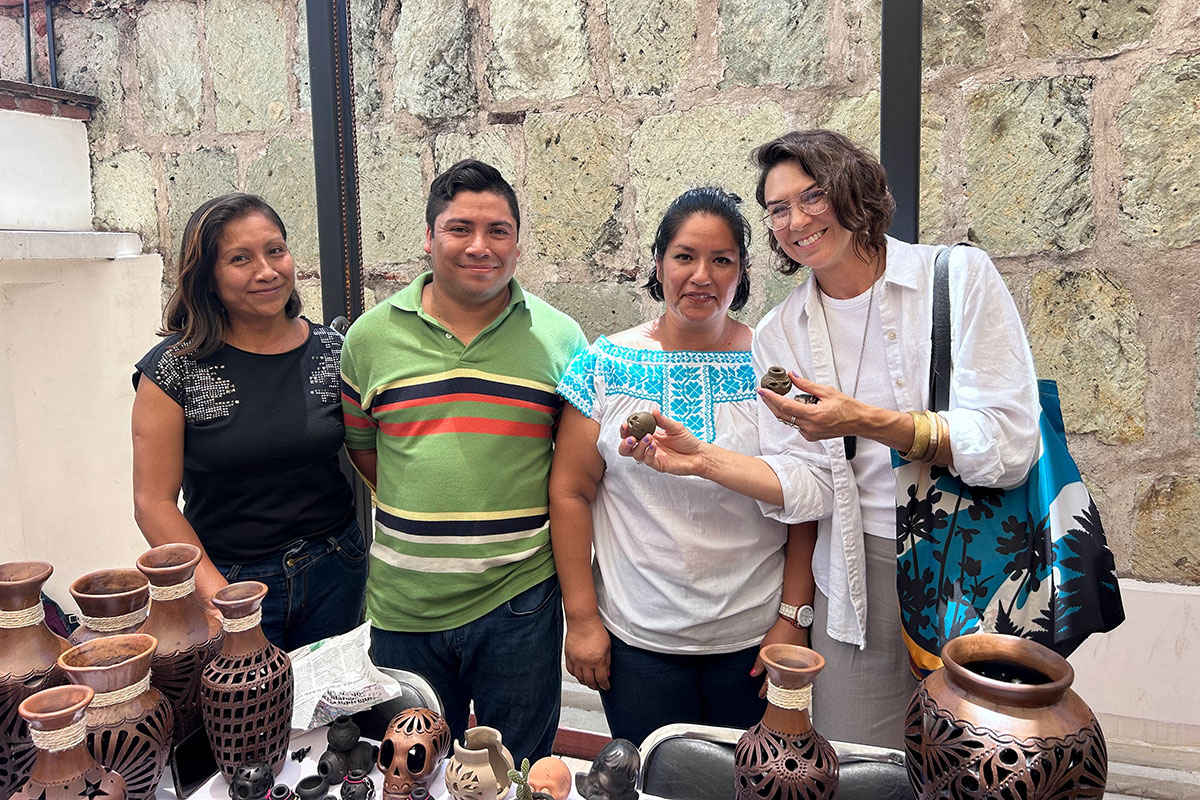This month, the Center for Folklife and Cultural Heritage, in collaboration with the Facultad de Bellas Artes–Universidad Autónoma Benito Juárez de Oaxaca (Bellas Artes UABJO), launches Heritage & Handicrafts: OAXACA, a community-based artisan project designed to enhance local market access and global awareness of the Mexican region’s craft sector. Supported by the U.S. State Department Bureau of Educational and Cultural Affairs Cultural Heritage Center, the project is part of the Smithsonian’s Cultural Vitality Program and draws upon the work of the Smithsonian Folklife Festival.
In addition to being the most biodiverse state in Mexico and home to significant archeological sites, Oaxaca boasts an impressive variety of craft traditions that includes everything from weaving and ceramics to metal- and leather-working. Collaborating with Bellas Artes UABJO (in English, UABJO’s School of Fine Arts) and local artisans, the Center will co-create research, training activities, and workshops to support the intergenerational transmission of skills, community-driven documentation, and, by extension, stewardship of cultural and natural heritage sites.
“In working with the interdisciplinary team at UABJO, we can apply an approach that engages the full cultural ecosystem,” said Halle Butvin, the Center’s director of special projects. “We’re hopeful that the outcomes of this work can inform new ways of sustaining artisan craft practice within its cultural context.”
In August, the Smithsonian’s project team traveled to Oaxaca to meet potential local partners, ultimately selecting Bellas Artes UABJO after a series of interviews, stakeholder meetings, and site visits. From there, the teams developed a project framework, identified capacity-building needs and opportunities, and delineated next steps for community-engaged research activities. Co-creation is integral to the project’s process. Bellas Artes UABJO faculty director, Professor Liliana Rocio García Valentín, said it is “an honor to collaborate with the Smithsonian Center for Folklife and Cultural Heritage and, equally, to continue our work with artisans from Oaxaca. May this collaboration be the beginning of transformative endeavors with long-term benefits for our shared cultural environment!”
During the trip, the project team also visited several artisan workshops and shared objectives and goals. At Buidoo Xtera Duu, a danza de la pluma (traditional feather dance) regalia initiative in the municipality of Zaachila, community members noted, “collaborating with the Smithsonian means creating an alliance that allows us to recognize, value, and proudly share the wealth of our community through feather art.”
“We are excited to embark on this initiative to research, explore, link, train, and disseminate culture, arts, and crafts with the Smithsonian, the U.S. Department of State, and, most importantly, with artisans from Oaxaca,” added Dr. Fernando Gumeta Gómez, a Bellas Artes UABJO professor and researcher. “We believe together, and by adding more allies, we can explore new horizons, preserve local practices, knowledge, and invaluable traditions making craft better known, and improve local livelihoods.”
In the coming weeks, Bellas Artes UABJO faculty and student researchers will visit select communities to document artisan stories and craft practices. These activities will overlap with in-person and virtual trainings and workshops to be held this fall and spring and led by senior advisor and interdisciplinary textile artist Lesli Robertson. Conceived as a pilot project, Heritage & Handicrafts: OAXACA is a continuation of the Center’s work with Mexico’s artisan sector. An impact assessment will help shape the Center’s ongoing endeavors to support the future of craft, tradition, and innovation both in the United States and around the world.
About the Cultural Vitality Program
The Center’s Cultural Vitality Program bolsters community efforts to preserve and practice living cultural heritage in the face of social, economic, and political challenges. The program aims to understand and mitigate threats to cultural vitality, scale our impact through partnerships, convenings, and thought leadership, and transform public understanding of cultural diversity.
About the Facultad de Bellas Artes—Universidad Autónoma Benito Juárez de Oaxaca
Benito Juárez Autonomous University of Oaxaca’s Bellas Artes (School of Fine Arts) trains professionals in arts, and cultural, artistic, and craft management. It embraces diversity, multiculturalism, and environmental sustainability, acknowledging the relevance of building youth identity and promoting a sense of belonging. The school maintains strong ties with Oaxacan society, artists, and artisans through its students, graduates, and teachers. Bellas Artes faculty also collaborate with the Interdisciplinary Research Center for Integral Regional Development Oaxaca Unit – IPN, the Ministry of Culture, and Oaxaca’s local and state government cultural expressions.
About the U.S. State Department Center for Cultural Heritage—Bureau of Educational and Cultural Affairs
The Cultural Heritage Center leads U.S. cultural heritage diplomacy. Its efforts protect and preserve culture worldwide. This work fights terrorist financing from antiquities trafficking and strengthens international law enforcement cooperation. It promotes stability, economic development, and good governance. It shows American respect for foreign cultures and builds mutual understanding through cultural exchange.


